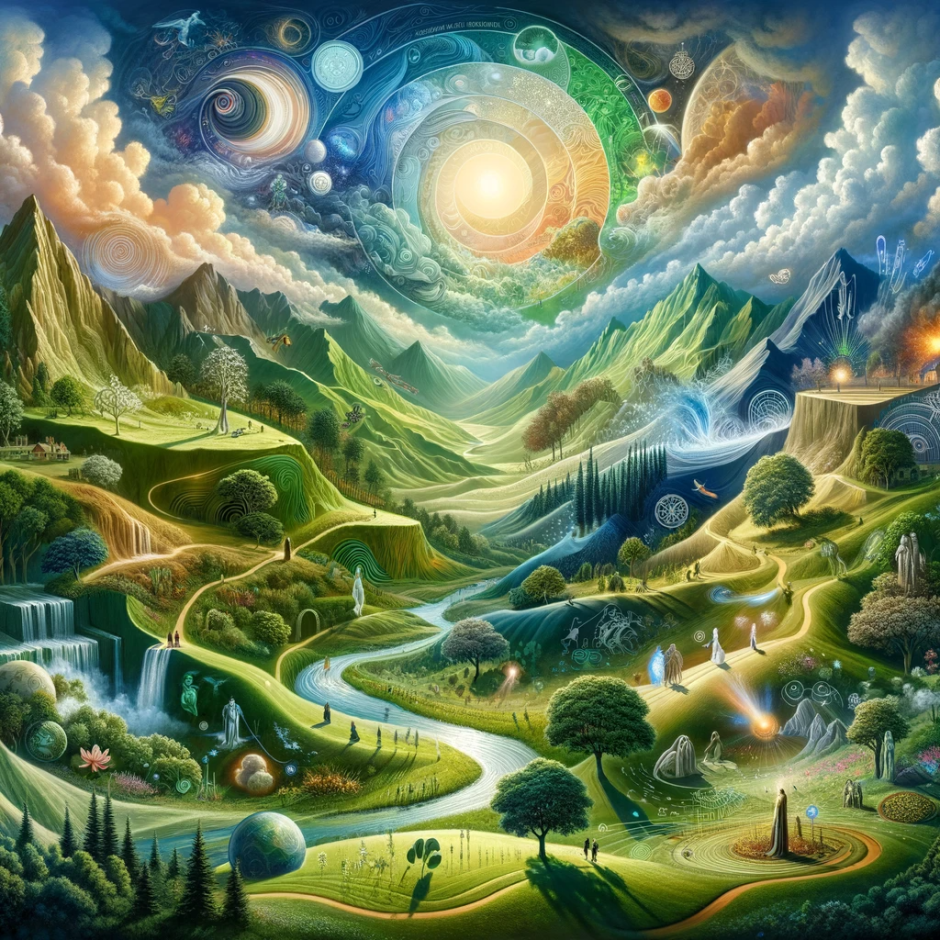The subtle body, a concept steeped in history and spirituality, weaves a compelling narrative about the link between our physical presence and our non-dual consciousness. This ethereal counterpart to our physical form serves as a vital conduit through which the energies of higher planes of existence flow into our mundane experiences. It is a concept that challenges the rigid boundaries of materialism, suggesting that our essence extends beyond the tangible flesh and bones, resonating with frequencies that align us with the universe’s intricate web.
A prominent exploration of the subtle body exists in the Hindu Upanishads, where it manifests through the layers or sheaths known as koshas. These koshas represent the emanation of pure awareness into material form, a gradation from the gross to the subtle, from the seen to the unseen. The ancient texts propose that knowledge of the “self” or atman can be gained by self-inquiry, a disciplined investigation of these layers, leading to the realization that our true identity transcends these sheaths.
The first of these layers, Annamaya kosha (the food sheath), symbolizes our physical body, sustained by the nutrients we consume. It is the most palpable aspect of our being, serving as the vessel for our journey through the physical world. Next is the Pranamaya kosha (the life force sheath), representing the vital energy, prana, that courses through us, animating every cell and fiber of our being. Following this is the Manomaya kosha (the mind sheath), which encompasses our mental processes and emotional states, weaving the tapestry of our personal narrative.
The fourth layer, Vijnanamaya kosha (the consciousness sheath), embodies discerning intuitive awareness, the “I Am” presence that observes and perceives, standing as a witness to our experiences. It is a more refined aspect of our consciousness that begins to touch upon the spiritual realm. Finally, the Anandamaya kosha (the bliss sheath) is the innermost layer, symbolizing the pure, blissful awareness of our divine nature, an echo of the boundless joy that is our original state.
The subtle body serves as a crucial bridge linking the cosmic non-dual consciousness with the human body. It offers us a multidimensional understanding of existence, where the spiritual and the physical are not opposing forces but interconnected dimensions of the same reality. Through the subtle body, we gain insight into the seamless continuity between the finite and the infinite, the temporal and the eternal.
Engaging with the concept of the subtle body provides a profound understanding of our being. Recognizing and exploring our subtle body allows us to tap into our spiritual dimensions, fostering an enriched connection with the divine and a deeper comprehension of our place in the cosmos. Embracing the subtle body is not merely an intellectual exercise but a transformative journey towards self-discovery, self-realization, and spiritual awakening. It is a journey that unfolds the petals of our existence, revealing the luminous core of our true identity.
Reference:
Taittiriya Upanishad
Comments
I invite you to share your ideas on non-duality, spirituality, and symbols. We awaken together! All perspectives are welcome. Please feel free to include links to your writing if you write on these topics. Be aware that I do not always monitor comments. The content shared on this blog reflects my spiritual explorations and is not meant as psychological advice; for that, please consult a qualified mental health professional. Please read the terms of use.









